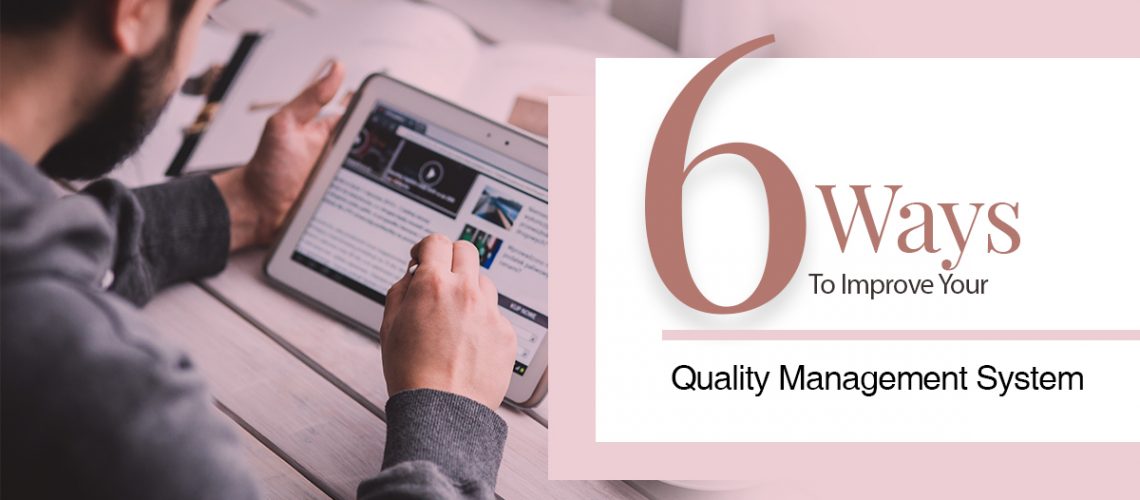


Quality Management System or QMS is the backbone of a company’s management system; therefore, it must be efficient. The most effective quality control managers know how to enhance the QMS to improve product quality, optimise manufacturing processes, and meet the ISO 9001 Standard. Below are listed six ways to improve the efficiency of your QMS.1. Have a Digital QMS
Remember to “work smarter, not harder.”These days, a paper-based or spreadsheet-based QMS is very hard to find. This is because it is very difficult to deal with the traditional QMS, as it requires many manual updates and a lot of maintenance. Analyzing any collected data within this type of system is a time-consuming task. Therefore, the digital QMS is preferred.
Digital QMSs are able to collect and aggregate relevant data in real-time. They are also able to streamline the quality management process, and provide a digital central data repository. Trying to remember where an updated document will be easy, having a digital QMS will save time and effort to a great extent.
2. Integrate Quality Control with Other Management Processes
Quality control should be kept in harmony with other areas of business strategy- from sourcing and designing to manufacturing, distributing, and servicing. Modern QMS solutions integrate vital data sources and systems to develop closed-loop quality processes, and feedback loops in functional areas. This will improve the value chain and help to correct and prevent quality issues while cutting down on costs.
3. Maintain a High Standard for Reporting & Analytics
To have accurate reports, the collected data must be solid. If the QMS was paper-based, this would require manual entry’s in a spreadsheet, and the reliance on old data that could be riddled with errors. Advanced QMSs have taken reporting and analytics to the next level. First of all, the reports now are built of, as mentioned before, real-time data. Reporting dashboards of most QMSs are now made dynamic, and they provide a number of views of data with drill-down capabilities. With these new tools, maintaining the highest level of reporting and analytics will be much easier.
4. Think in Advance
Always look for a QMS that will be able to grow with your business and manufacturing requirements. Paper-based QMSs had little ability to grow with the businesses, while modern QMSs are much more flexible. Some businesses hire quality assurance consultants to operate these systems, as in-house resources may not be experienced with the systems. Consider these aspects in advance to reliably avoid any problem emerging from these issues in near future.
5. Keep the QMS Mobile
This is an age of mobility, and even the quality management system cannot escape it. The International Organisation for Standardisation or ISO always keeps its standards changing with the newest standards of quality. ISO 9001 is included in this continual improvement process; therefore, the QMS should be able to adopt the changes. If it remains static and fails to adopt new changes, it will no longer be compliant with the changed ISO 9001 Standard.
6. Keep Validating your Systems
With the changes in the ISO 9001 standard, you should keep your quality processes validated. It will help you maintain your QMS’s compliance with the latest ISO 9001 Standard.
Follow these six ways to increase the efficiency of your Quality Management System!

Get connected with us on social networks!